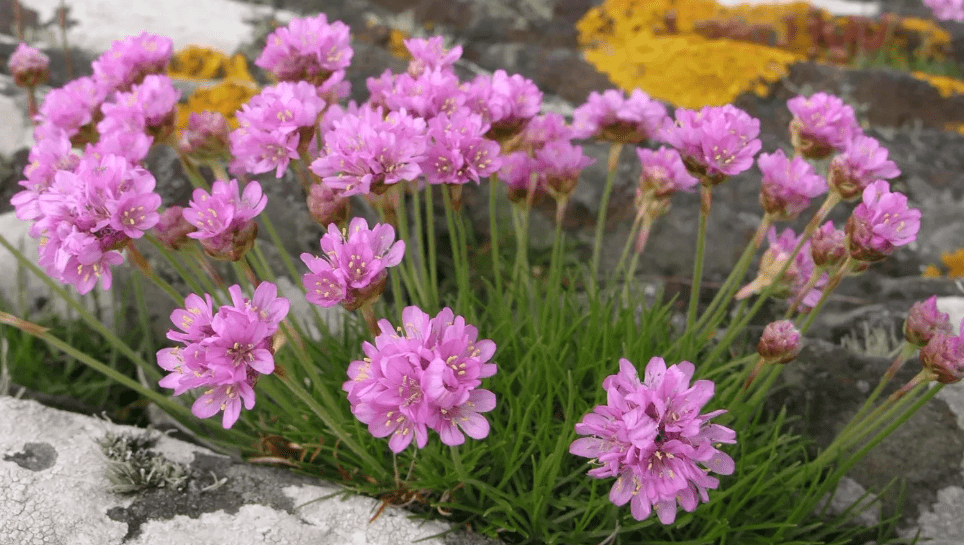
Plant Thrift: A Gardener's Guide to Thriving Perennial Blooms
Plant thrift, also known as sea pink, is a hardy and versatile perennial that has captured the hearts of gardeners worldwide. Renowned for its resilience and stunning blooms, this low-maintenance wonder thrives in a variety of conditions, making it an ideal choice for both novice and experienced gardeners.
With its dense mats of evergreen foliage and cheerful clusters of pink, purple, or white flowers, thrift adds a touch of charm to any garden. Whether you’re looking to create a vibrant rock garden, a cascading border, or a captivating container display, this adaptable plant is sure to impress.
Table of Contents
ToggleUnderstanding Plant Thrift
A. Botanical name and common names
The botanical name for plant thrift is Armeria maritima, but it is also commonly known as sea pink, sea thrift, and cliff rose. This beloved perennial is native to coastal areas and is well-suited to sandy, well-drained soil and full sun, but it can also adapt to a range of conditions, including drought and salt spray.
B. Native habitat and growth characteristics
Thrift is native to coastal areas and is known for its resilience and ability to thrive in harsh conditions. Its dense mats of evergreen foliage and cheerful clusters of pink, purple, or white flowers make it a striking addition to any garden. Its low-maintenance nature and adaptability make it an ideal choice for both novice and experienced gardeners. Whether you’re creating a rock garden, border, or container display, thrift is sure to add a touch of charm and beauty to your outdoor space. With its stunning blooms and ability to thrive in a variety of conditions, there’s no doubt that plant thrift is a must-have for any garden.
C. Different varieties of plant thrift (color, size, growth habit)
Plant thrift comes in a variety of colors, including pink, purple, and white, allowing you to choose the perfect hue to complement your garden or landscape. It also comes in different sizes and growth habits, from compact dwarf varieties to larger, more spreading forms. This versatility makes it easy to find the perfect plant thrift for your specific needs and preferences. Whether you’re looking for a ground cover, border plant, or container specimen, there’s a plant thrift variety that will suit your garden perfectly. With so many options to choose from, there’s no reason not to add this stunning and resilient plant to your outdoor space. Whether you prefer compact or spreading, pink, purple, or white, there’s a plant thrift variety that will bring beauty and charm to your garden.
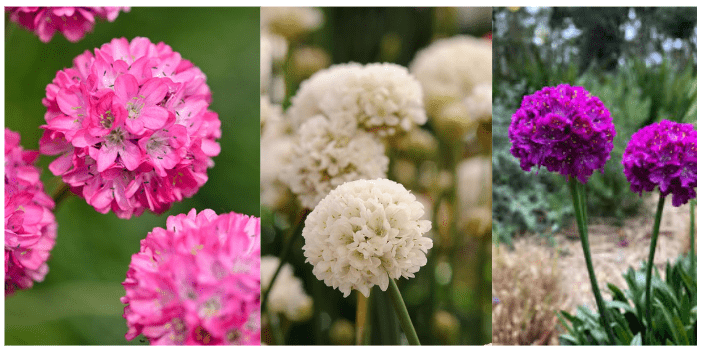
D. Plant thrift’s role in the ecosystem (pollinators, erosion control)
Plant thrift plays an important role in the ecosystem as it attracts pollinators such as bees and butterflies. By providing nectar and pollen, it helps to support the health and diversity of these crucial insect populations. Additionally, its dense foliage and spreading growth habit make it an effective erosion control plant, helping to stabilize soil and prevent erosion in gardens, landscapes, and natural areas. By incorporating plant thrift into your outdoor spaces, you’re not only adding beauty and color, but also contributing to the health and well-being of the surrounding ecosystem. Its role in supporting pollinators and preventing erosion makes it a valuable addition to any garden or landscape. So why not do your part for the environment and add plant thrift to your outdoor spaces today?
Benefits of Growing Plant Thrift
A. Low maintenance and drought tolerance
Low maintenance and drought tolerance are two of the key benefits of growing plant thrift in your garden. With its ability to thrive in dry conditions and require minimal care, plant thrift is the perfect choice for busy gardeners or those living in arid climates. Its low water needs make it a sustainable and eco-friendly option for landscaping, as it reduces the overall water consumption of your garden. By choosing plant thrift, you can create a stunning oasis without the need for constant watering and maintenance. This not only saves you time and effort but also helps to conserve water, making it a win-win for both you and the environment. With its beautiful, vibrant blooms and ability to withstand dry conditions, plant thrift is a game-changer for any garden or landscape. So why not give it a try and experience the power of plant thrift for yourself? Your garden will thank you!
B. Versatility in garden design
Plant thrift offers a versatility in garden design that is hard to come by. Whether you’re looking for a desert-inspired landscape or a lush garden full of vibrant colors, plant thrift can fit seamlessly into any design scheme. Its low water needs make it a sustainable and eco-friendly option for landscaping, as it reduces the overall water consumption of your garden. By choosing plant thrift, you can create a stunning oasis without the need for constant watering and maintenance. This not only saves you time and effort but also helps to conserve water, making it a win-win for both you and the environment. With its beautiful, vibrant blooms and ability to withstand dry conditions, plant thrift is a game-changer for any garden or landscape. So why not give it a try and experience the power of plant thrift for yourself? Your garden will thank you!
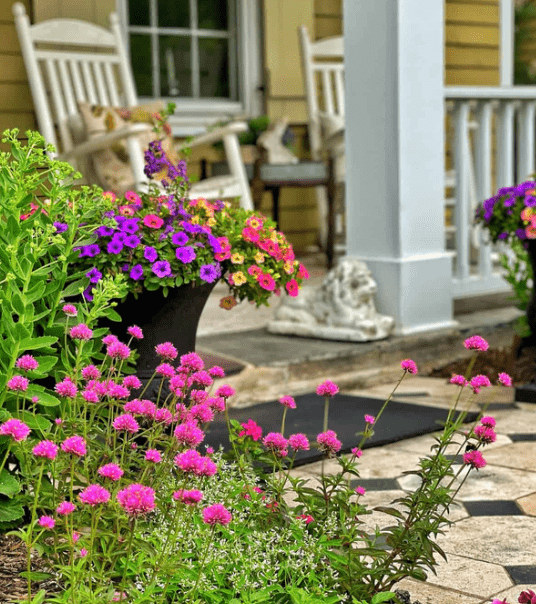
C. Cost-effective and eco-friendly option
Cost-effective and eco-friendly option for landscaping, plant thrift is the way to go. Not only does it require minimal water, but it also reduces the overall water consumption of your garden. This means you’ll be saving money on your water bill while also contributing to water conservation efforts. Plus, the low maintenance nature of plant thrift means you’ll spend less time and effort on upkeep, giving you more time to enjoy your beautiful garden. It’s a win-win for both you and the environment. So why not make the switch to plant thrift and create a stunning, sustainable oasis in your own backyard? Your garden and your wallet will thank you!
D. Improved soil health (ground cover benefits)
Not only does plant thrift require minimal water, but it also improves the overall soil health of your garden. By acting as ground cover, plant thrift helps prevent erosion, retain moisture, and suppress weed growth. This means you’ll spend less time and money on fertilizers and pesticides, while also promoting a healthier ecosystem in your garden. The benefits of improved soil health extend beyond just the plants themselves, creating a more sustainable and vibrant environment for all living organisms. So, why not make the switch to plant thrift and give your garden the gift of improved soil health? Your garden will thrive, and you’ll be making a positive impact on the environment. It’s a win-win for everyone involved!
Designing with Plant Thrift
A. Creating a stunning rock garden
Plant thrift is a perfect addition to any rock garden. With its low-growing, dense foliage, it will provide the perfect ground cover to complement the rocks and other plants in your garden. Not only will it add visual interest and texture, but it will also help prevent erosion and retain moisture, ensuring that your rock garden stays beautiful and healthy for years to come. Plus, with plant thrift in place, you’ll spend less time and money on maintenance, leaving you more time to enjoy the beauty of your garden. So, if you want to create a stunning, low-maintenance rock garden, plant thrift is the perfect choice. Make the switch today and watch your garden thrive!
B. Using thrift as a ground cover
Using thrift as a ground cover is a fantastic way to transform your garden into a lush, beautiful oasis. Plant thrift not only adds visual appeal to your garden, but it also provides practical benefits. By using thrift as a ground cover, you can prevent erosion, retain moisture, and reduce the need for maintenance. This low-growing, dense foliage will complement the other plants in your garden and create a stunning, cohesive look. Plus, thrift is easy to care for, making it the perfect choice for a low-maintenance garden. With the power of plant thrift, you can create a beautiful, thriving garden that you can enjoy for years to come. So, don’t wait any longer – start using thrift as a ground cover in your garden and watch it transform into a beautiful oasis.
C. Container gardening with plant thrift
Container gardening with plant thrift offers a unique and versatile way to bring the beauty of this plant into your outdoor living space. Whether you have limited outdoor space or simply want to create a stunning display on your patio or balcony, plant thrift in containers can add a touch of elegance and practicality. Not only does it provide all the same benefits as ground cover, but it also allows you to easily move and rearrange your garden to suit your needs. With plant thrift in containers, you can enjoy the same stunning visual appeal and practical benefits, all in a convenient and portable package. So, if you want to create a beautiful, thriving garden in a limited space, container gardening with plant thrift is the perfect solution. Don’t hesitate to add this versatile plant to your outdoor oasis and enjoy the beauty and practicality it brings.
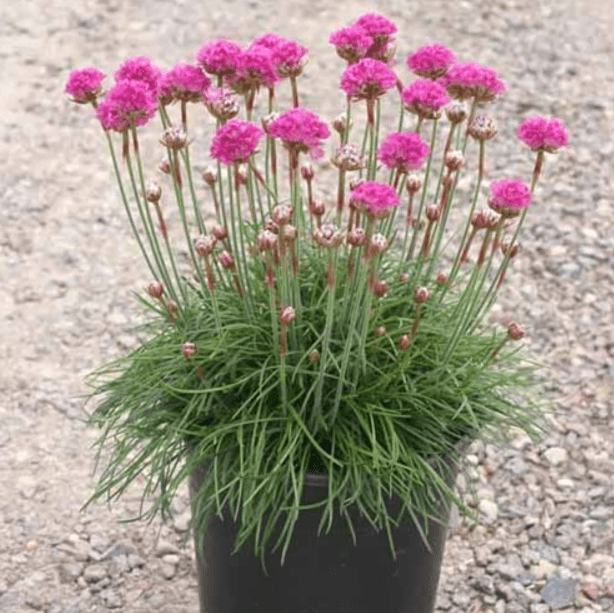
D. Combining thrift with other plants for visual impact
Container gardening with plant thrift is not only practical and convenient, but it also offers endless possibilities for creating stunning visual displays. By combining plant thrift with other plants in your containers, you can create a vibrant and dynamic garden that will be the envy of all your neighbors. Whether you want to create a lush and colorful display with vibrant flowers, or a more subtle and calming arrangement with different shades of green, plant thrift can be the perfect addition to your container garden. With its low-maintenance nature and ability to thrive in various conditions, plant thrift is the perfect plant to pair with other garden favorites. So, if you want to create a visually impactful garden that will make a statement, look no further than combining plant thrift with other plants in your containers. Let your creativity and imagination run wild, and create a stunning outdoor oasis that will be the talk of the town.
Planting and Care
A. Best time to plant thrift
Best time to plant thrift is in the spring or fall, when the weather is mild and plants can establish themselves before the heat of summer or the cold of winter. Make sure to choose a well-draining pot and use a high-quality potting mix to ensure the best growing conditions for your plant thrift. Water regularly, but be sure not to overwater, as plant thrift prefers slightly dry conditions. With the right care and attention, your combination of plant thrift and other plants will thrive and bring beauty to your outdoor space. So, go ahead and get creative with your container garden and make a visual impact that will impress everyone who sees it. Your garden will thank you for it!
B. Preparing the soil
Preparing the soil and choosing the right location for your plant thrift is crucial for its success. Select a spot that receives full sun or light shade and has well-draining soil. Incorporate some organic matter into the soil to improve its fertility and texture. By taking the time to prepare the soil properly, you are setting your plant thrift up for long-term success and growth. So, go ahead and get your hands dirty and create the perfect environment for your plant thrift to thrive. Your efforts will be rewarded with a beautiful and flourishing garden.
C. Planting techniques (spacing, depth)
When it comes to planting your plant thrift, proper spacing and depth are essential for ensuring its health and longevity. Make sure to space your plants at least 12 inches apart to allow for proper air circulation and prevent overcrowding. When it comes to planting depth, make sure to dig a hole that is just deep enough to cover the roots of the plant and no deeper. This will help to prevent the plant from becoming waterlogged and promote healthy root growth. By following these planting techniques, you are setting your plant thrift up for success and ensuring that it has the space and nutrients it needs to thrive. So, take the time to plant your plant thrift properly and watch as it flourishes into a beautiful addition to your garden.
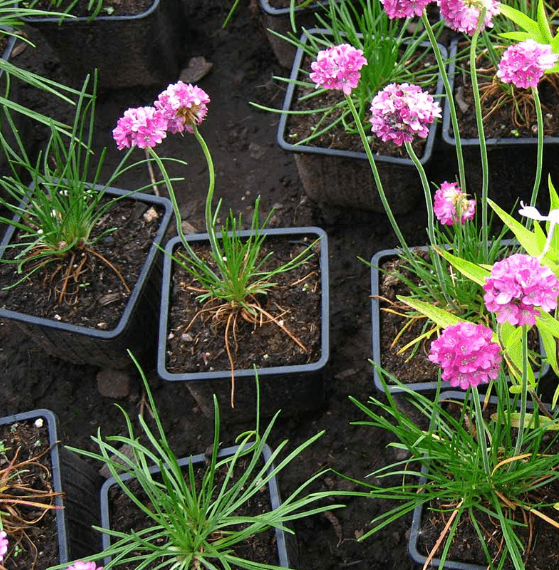
D. Watering and fertilizing requirements
When it comes to watering and fertilizing your plant thrift, it’s important to be consistent and mindful of its specific needs. Water your plant thrift regularly, making sure to keep the soil moist but not waterlogged. Avoid overwatering, as this can lead to root rot and other issues. As for fertilizing, make sure to use a balanced fertilizer that is specifically formulated for perennial plants. Apply the fertilizer according to the instructions on the packaging, being careful not to over-fertilize as this can harm the plant. By staying on top of watering and fertilizing, you are providing your plant thrift with the essential nutrients it needs to thrive and bloom. So, don’t neglect these important tasks and watch as your plant thrift rewards you with vibrant and healthy growth. Your efforts will be well worth it in the end.
E. Pruning and maintenance tips
Pruning and maintenance are essential to keeping your plant thrift looking its best. Regularly removing dead or yellowing foliage will not only improve the appearance of the plant, but also promote healthy growth. Additionally, deadheading faded flowers will encourage the plant to produce more blooms, ensuring a continuous display of beautiful flowers. And don’t forget to check for pests and diseases, addressing any issues promptly to keep your plant thrift in top condition. With just a little bit of effort, you can enjoy a thriving and stunning plant thrift in your garden. So, take the time to care for your plant thrift and you will be rewarded with a flourishing and vibrant addition to your garden.
F. Protecting thrift from pests and diseases
Protecting thrift from pests and diseases is crucial to maintaining its health and beauty. Regularly inspect your plant for any signs of pests or diseases, and take immediate action to address them. Utilize natural remedies or pesticides to effectively eliminate any threats to your plant thrift. By protecting it from pests and diseases, you are ensuring that it continues to thrive and provide you with an abundance of gorgeous flowers. Don’t let these potential threats diminish the beauty of your plant thrift – take the necessary steps to keep it safe and flourishing. Your effort and attention to detail will be well worth it when you see your plant thrift thriving and free from harm.
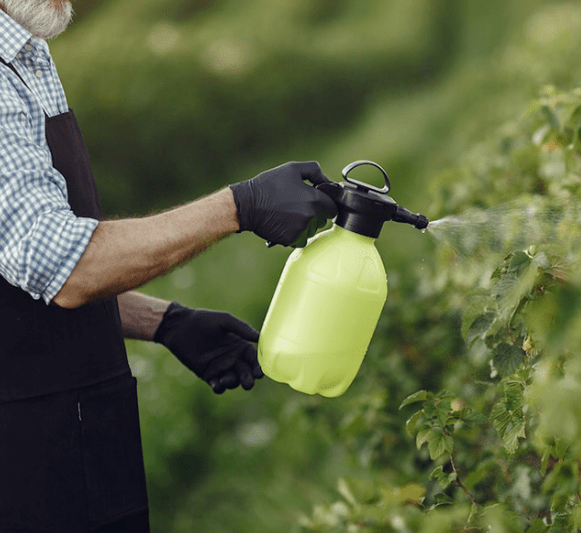
G. Propagating Plant Thrift
Plant thrift is a beautiful and versatile plant that can easily be propagated to create more of these stunning flowers in your garden. Using simple propagation methods such as division or stem cuttings, you can increase the number of plant thrift in your garden without much effort. By propagating plant thrift, you will be able to spread its beauty and charm throughout your garden and share it with others. Don’t miss out on the opportunity to expand your collection of these lovely flowers – take the time to propagate plant thrift and enjoy even more of their delightful blooms. With a little bit of patience and care, you can easily propagate plant thrift and enhance the beauty of your garden for years to come.
Thrift in Different Garden Styles
A. Plant thrift in cottage gardens
Thrift is a perfect addition to cottage gardens, bringing a charming and rustic element to the landscape. Its low-growing, mounding habit and delicate, pink or white flowers add a soft, whimsical touch to the garden. Planting thrift in cottage gardens creates a harmonious and traditional feel, allowing it to seamlessly blend in with other cottage-style plants. The versatility of thrift makes it an ideal choice for creating a quaint and picturesque look in your cottage garden. Its resilience and minimal maintenance needs also make it a practical and beautiful addition to your garden. Embrace the timeless appeal of thrift in your cottage garden and enjoy its enduring beauty for years to come.
B. Using thrift in contemporary gardens
Thrift may not be the first plant that comes to mind when thinking of contemporary gardens, but it should be! Its compact and tidy growth habit, along with its striking and vibrant blooms, make it an ideal choice for adding a pop of color and texture to contemporary garden designs. The clean lines and modern aesthetic of thrift complement the sleek and minimalist look of contemporary gardens, creating a harmonious and balanced landscape. Its ability to thrive in various soil types and its drought tolerance make it a practical and low-maintenance option for contemporary gardeners. Incorporating thrift into your contemporary garden will not only add visual interest but also contribute to the overall polished and sophisticated feel of the space. Embrace the modern appeal of thrift in your garden and elevate its design with this versatile and stylish plant.
Thrift Throughout the Seasons
A. Plant thrift’s appearance in spring
The vibrant and colorful blooms of thrift will make a stunning statement in your spring garden. The bold and cheerful flowers will bring a burst of energy and life to your space, creating a visually striking display that is sure to impress. As the weather warms and the garden comes to life, the addition of thrift will add a touch of excitement and vitality to your outdoor oasis. Don’t miss out on the opportunity to elevate your spring garden with the beauty of thrift.
B. Summer care and blooming
During the summer months, thrift requires minimal care and maintenance, making it the perfect plant for those who want to enjoy their garden without the hassle of constant upkeep. With its compact, tufted foliage and delicate, dainty flowers, thrift will continue to add an elegant touch to your garden throughout the season. Its resistance to heat and drought makes it a reliable and resilient choice for any garden, allowing you to sit back and enjoy the beauty it brings to your outdoor space without the stress of constant maintenance. Embrace the modern appeal of thrift and let it bring a touch of sophistication to your summer garden.
C. Fall and winter charm
Even as the days grow shorter and the temperatures drop, thrift will continue to bring charm and beauty to your garden. With its evergreen foliage and persistent blooms, thrift remains a stunning feature in the fall and winter months, adding a pop of color and interest to an otherwise dormant landscape. Embrace the versatility of thrift and let it be a focal point in your garden year-round, proving that beauty and style are not limited to a specific season. Don’t miss out on the opportunity to elevate your garden with the modern appeal of thrift, and enjoy its charm throughout the seasons.
In conclusion, plant thrift is the key to creating a beautiful garden without breaking the bank. By choosing the right plants, utilizing sustainable gardening practices, and being creative with your landscaping, you can achieve stunning results without spending a fortune. With a little bit of planning and resourcefulness, you can transform your outdoor space into a thriving oasis that will bring you joy for years to come. So why wait? Embrace the power of plant thrift and watch your garden bloom into a stunning masterpiece.
Frequently Asked Questions (FAQs)
Some easy-to-care-for perennial plants for beginners include coneflowers, black-eyed susans, and daylilies. These plants are low-maintenance and will thrive in most garden conditions.
To ensure your perennials bloom all season long, you can stagger your planting times so that you have a variety of plants blooming at different times. Additionally, deadheading your flowers and providing adequate water and fertilizer will encourage continuous blooming.
The best way to protect your perennials during the winter is to mulch around the base of the plants to insulate the roots and protect them from freezing temperatures. You can also cover delicate plants with a frost cloth for added protection.
Dividing and propagating perennial plants is a great way to expand your garden. You can do this by carefully digging up the plant, separating the root clumps, and replanting them in a new location. This can help rejuvenate older plants and create new ones.
Common pests and diseases that affect perennial plants include aphids, powdery mildew, and slugs. It’s important to regularly inspect your plants for signs of these issues and take appropriate measures to control and prevent them.
Most perennial plants thrive in full sun to partial shade and require regular watering, especially during hot and dry periods. It’s important to choose plants that are suitable for your specific garden conditions and to provide them with the appropriate care.
Some low-maintenance perennial plants for busy gardeners include sedum, lavender, and ornamental grasses. These plants require minimal care and will still provide beautiful blooms in your garden.
To attract pollinators to your perennial garden, you can plant a variety of flowering plants that provide nectar and pollen for bees, butterflies, and other beneficial insects. Additionally, avoiding the use of pesticides will help create a welcoming environment for pollinators.
